August 3-6, 1027
Le Musee´de Saint-Bonifance Museum
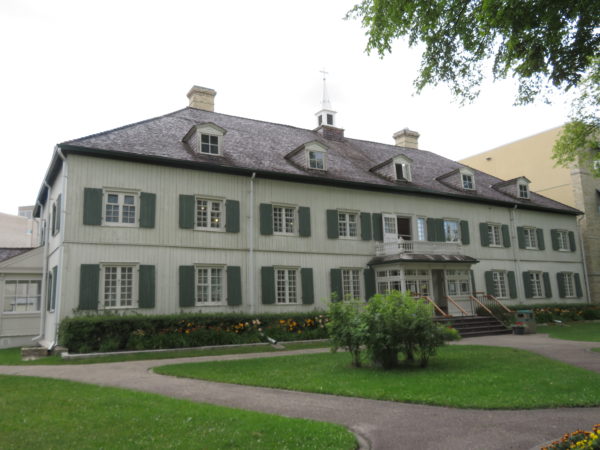 The museum is housed in the oldest building in Winnipeg, a convent of the Grey Nuns, built around 1850. It served as school, orphanage and hospital as well as convent.
The museum is housed in the oldest building in Winnipeg, a convent of the Grey Nuns, built around 1850. It served as school, orphanage and hospital as well as convent.
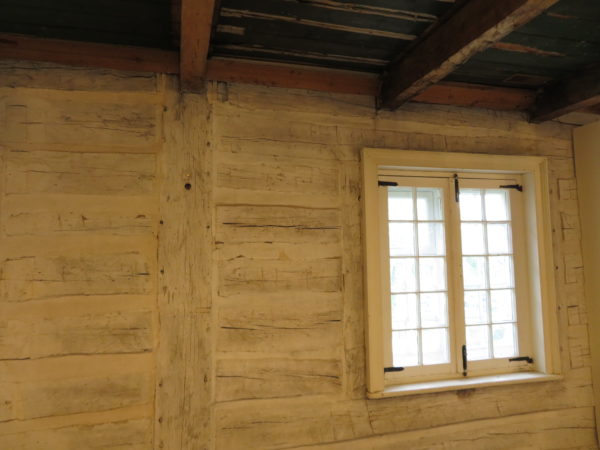 Exhibits in the museum highlight the cultures of First Nations people, fur traders, Francophone (French-speaking) settlers and Métis (descendants of First Nations and European parents).
Exhibits in the museum highlight the cultures of First Nations people, fur traders, Francophone (French-speaking) settlers and Métis (descendants of First Nations and European parents).
The Métis used a Red River Cart to transport furs, bison and belongings. These carts are made without nails or bolts as iron was expensive and not readily available. Instead parts were fastened with wooden pegs and bison hide. The carts typically weren’t greased and some people have likened the resulting squeak to the sounds of an untuned violin. The carts could hold about 1000 pounds.
Louis Riel was born in Winnipeg. He fought to preserve and protect the rights of Métis during confederation and after. He studied with the Grey Nuns for a while, is honored with a statue on the grounds of the museum, and is buried in the nearby St. Boniface cemetary.
The Cathedral of St. Boniface
The facade of this basilica and cathedral was built in 1906. Most of the building was damaged by fire in 1968, and in 1972 a new cathedral was built behind the 1906 facade.
Altar of the 1972 cathedral.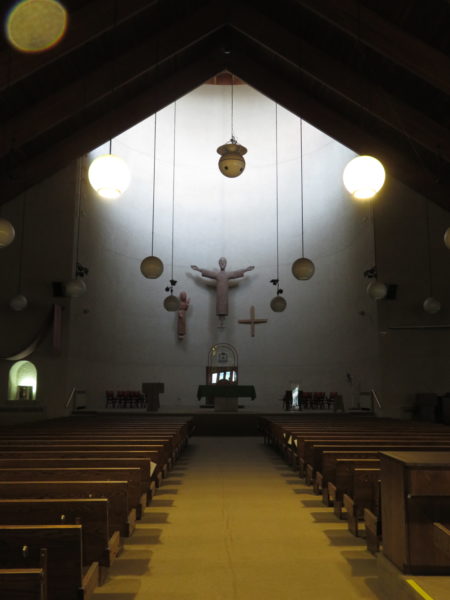
The rain was gentle as we walked toward the cathedral but quickly increased to a downpour. Along with a handful of other visitors, we took refuge in the narthex for a few minutes. Dave got to talking with Mike Reno, lead singer for the Canadian rock band Loverboy (formed in 1978) whose group was performing that night. The group’s 2017 single is called “Stop the Rain”, but we think that’s purely coincidence. We did enjoy recognizing Mike in an Enterprise National Car rental ad that still receives some air time.
Kildonan Park
We located several geocaches in this urban park and very much enjoyed the beautiful plantings and one sparkly rock.
Royal Canadian Mint
A facility to supplement the Royal Canadian Mint was built in Winnipeg in 1976. The mint in Ottawa produces commemorative coins and the Winnipeg facility produces coins for circulation–in Canada and in some 70 other countries. It is the first mint to produce coins with color. Photos were not allowed on the tour of the production areas, but we were able to get a shot of Dave lifting about a million dollars worth of gold (it was both chained down and well guarded) as well as some pictures of the building and grounds.
FortWhyte Alive
This is an environmental, educational and recreation center on 640 acres reclaimed clay mine and cement factory. We visited on a Sunday and were intimidated by the many bicyclers sharing the trails. On the other hand, we appreciated the beauty–and we saw our first muskrat, although our photo of it won’t win any prizes.
Assiniboine Park
We could have stayed busy at this park for days, but on this trip we were looking for a specific statue near a play area. A Canadian lieutenant bought a bear cub in Ontario on his way overseas to serve in World War I. He named it Winnie after his home town of Winnipeg. The lieutenant’s unit made a pet of the cub and it was left in the care of the London Zoo when the soldiers left for France. Among the people of London who took a fancy to the bear was a young boy named Christopher Robin. The bear became the model for A. A. Milne’s Winnie the Pooh.
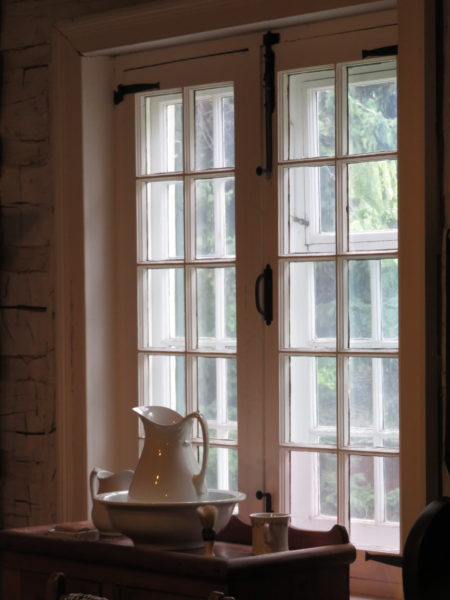
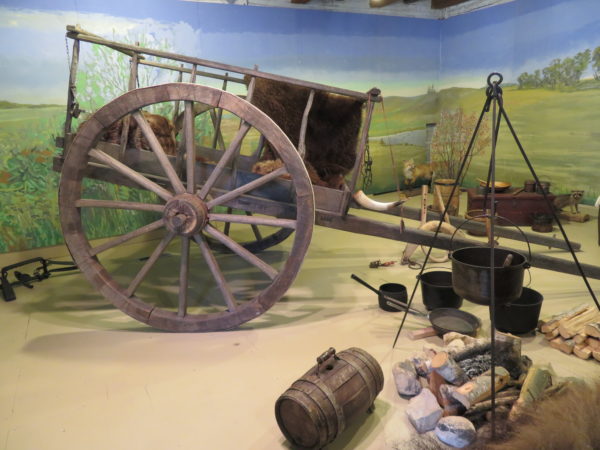
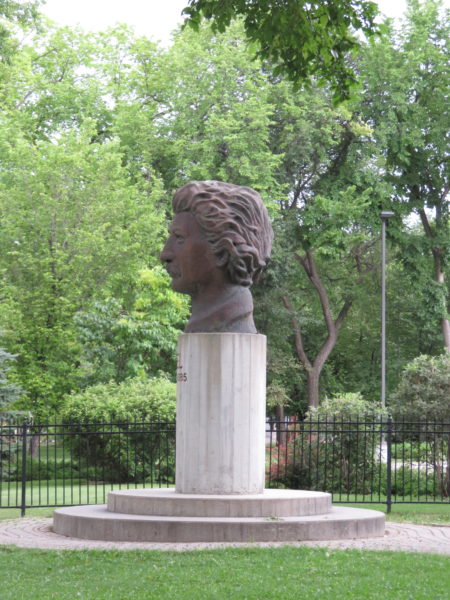
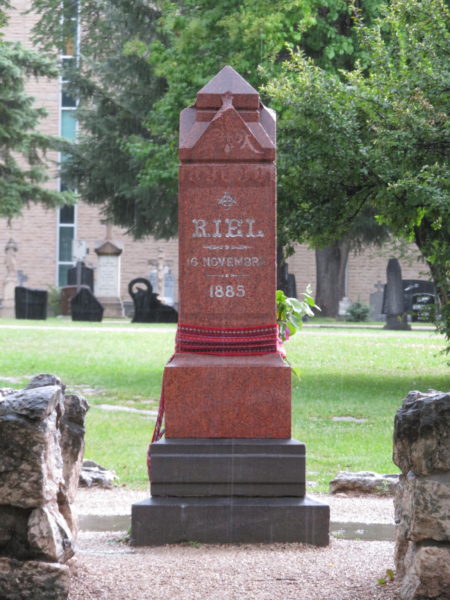
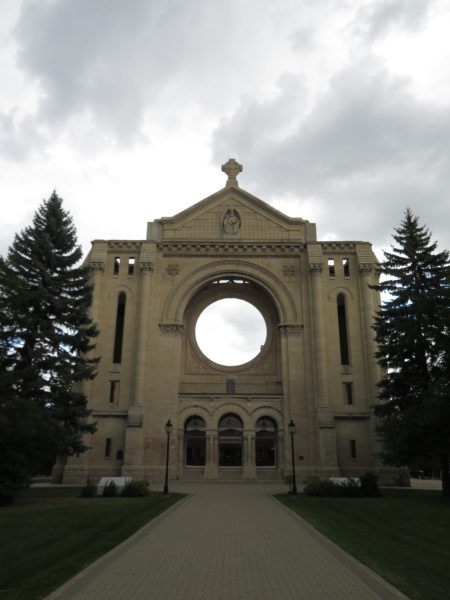
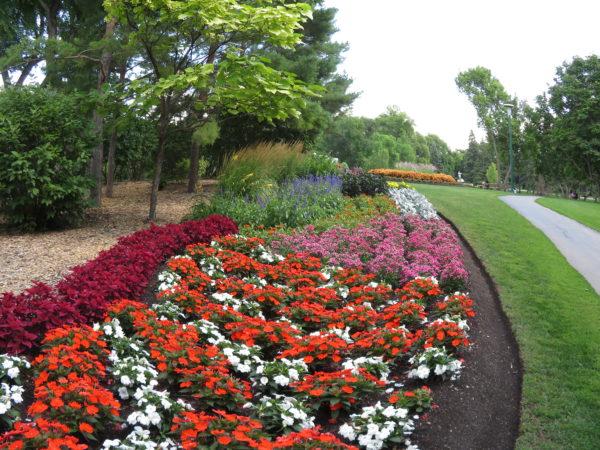
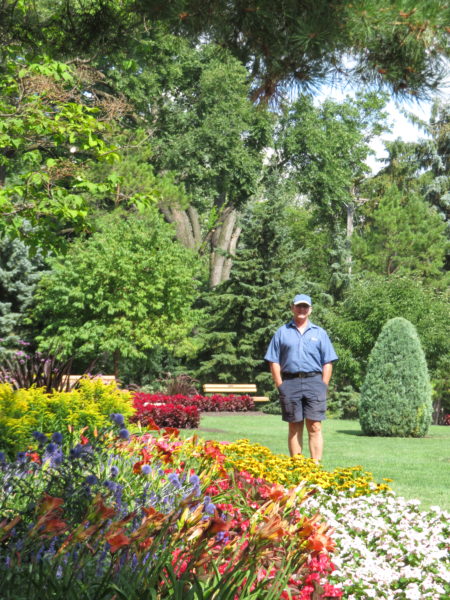

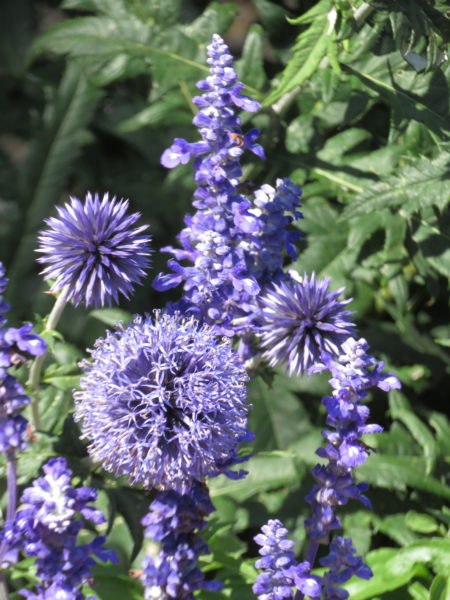



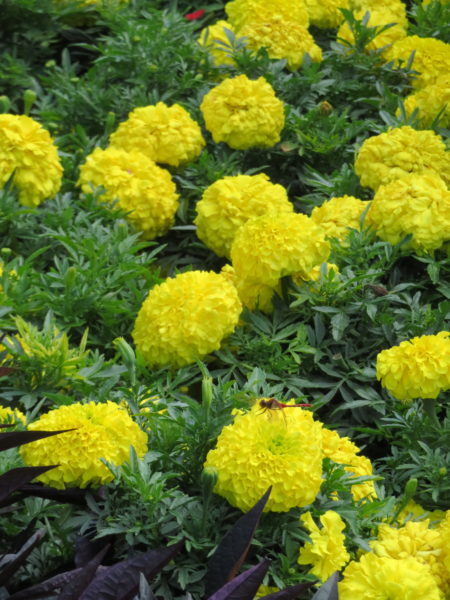
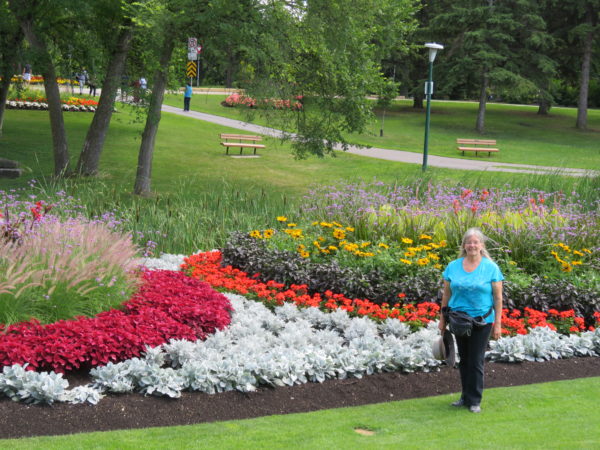
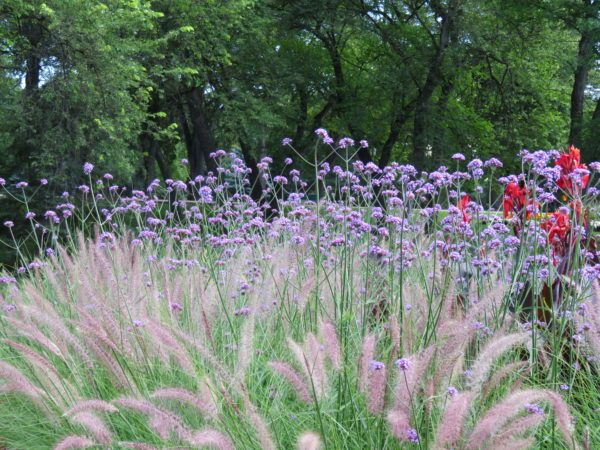
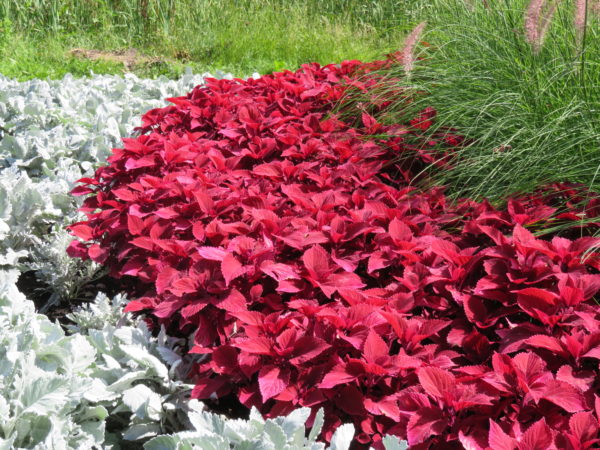
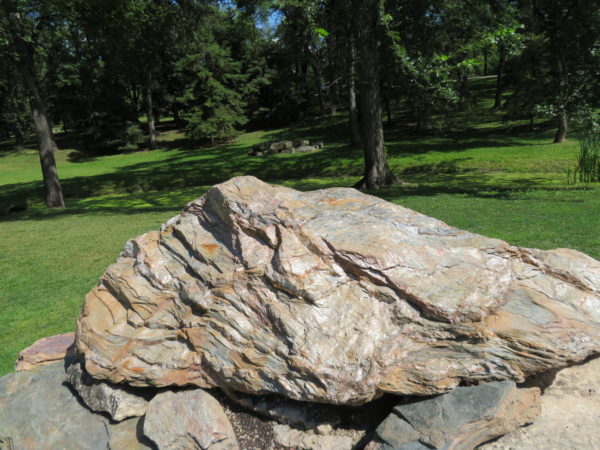
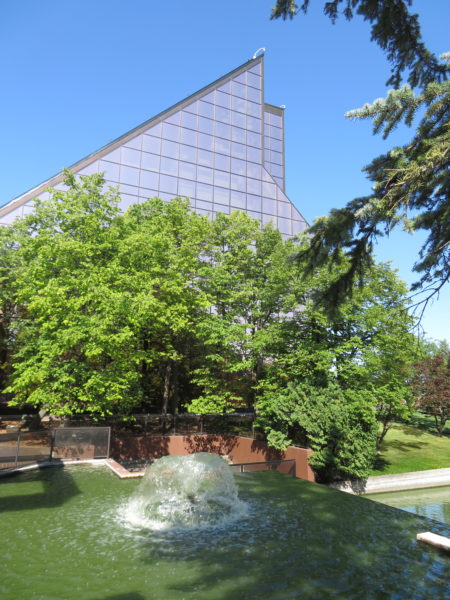
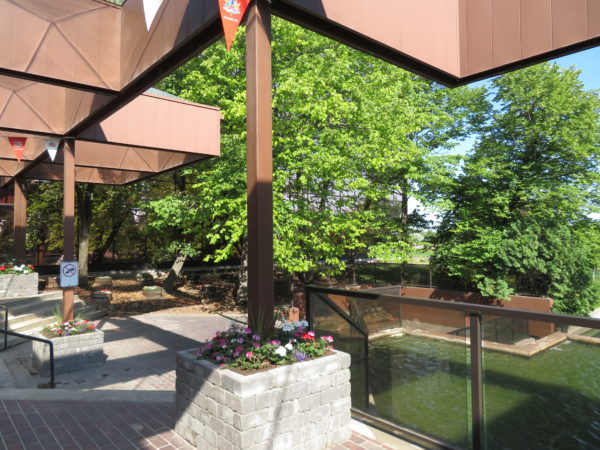
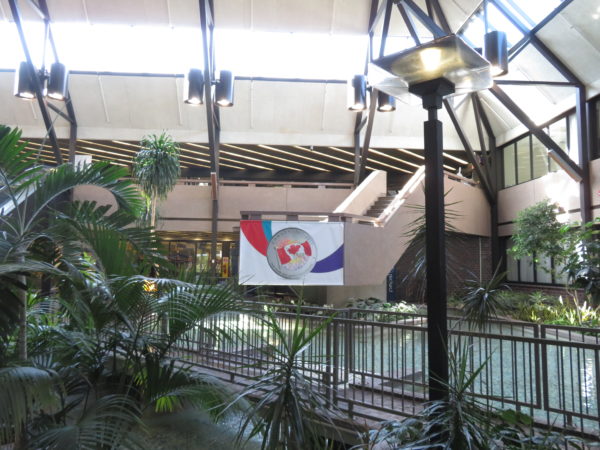
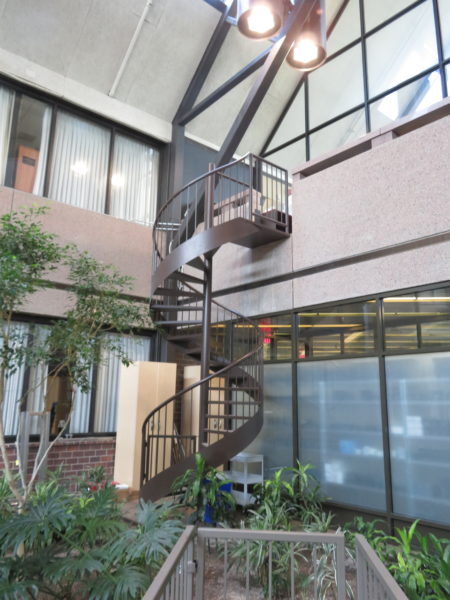
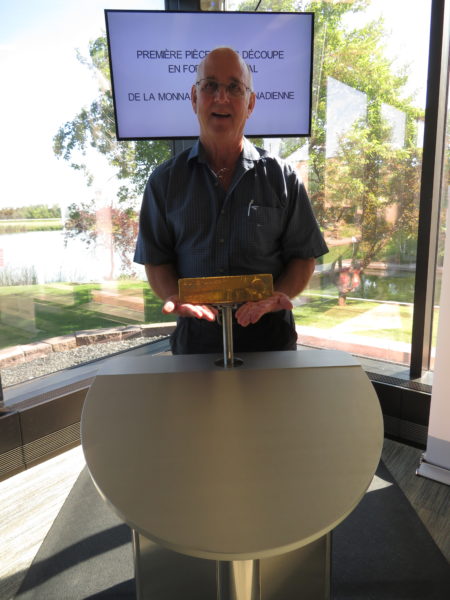
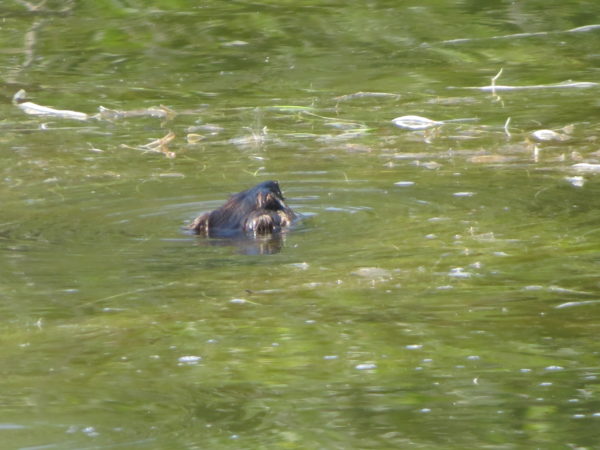
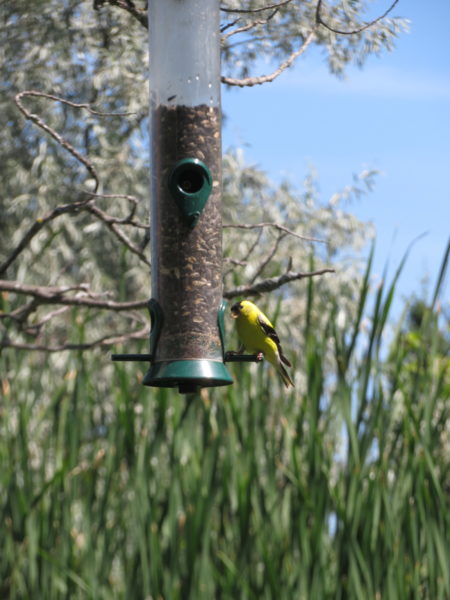
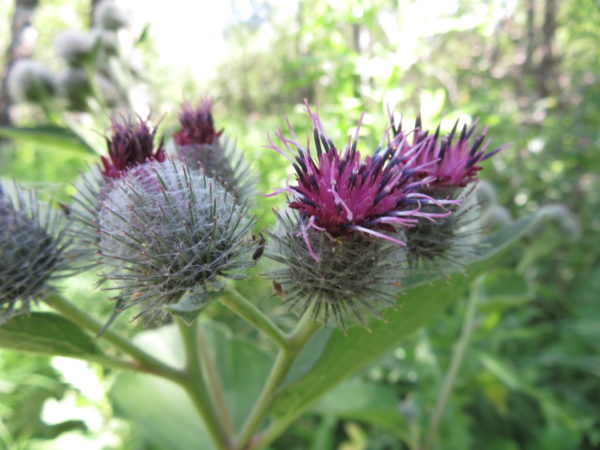
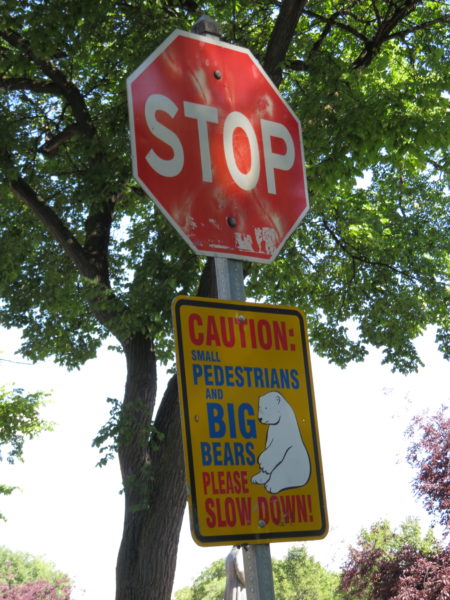
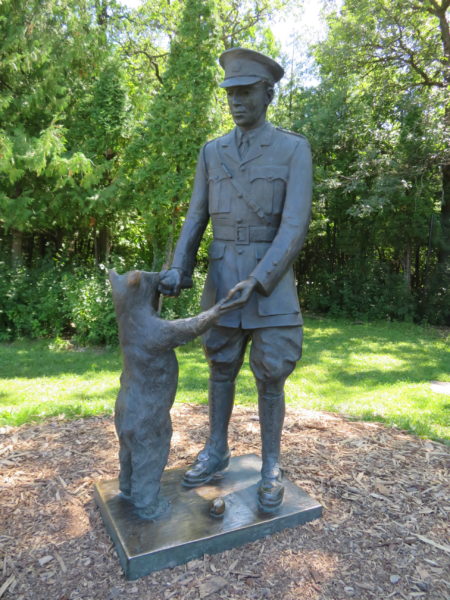
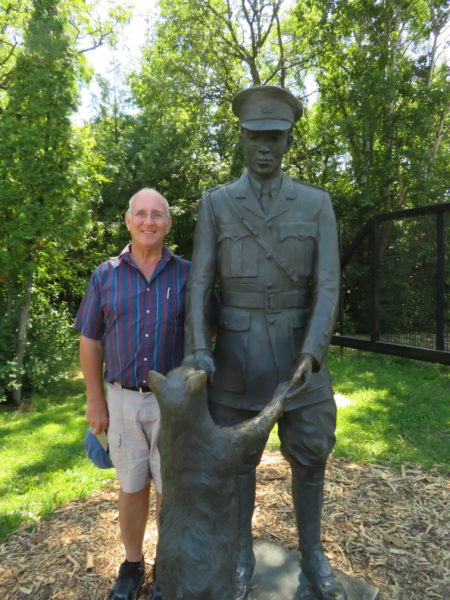
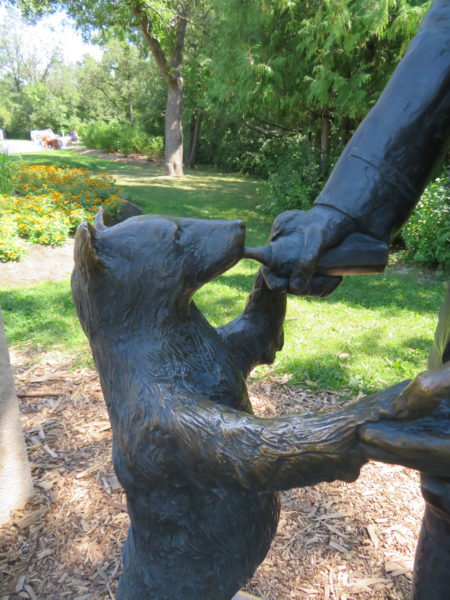
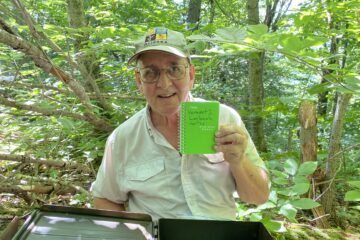
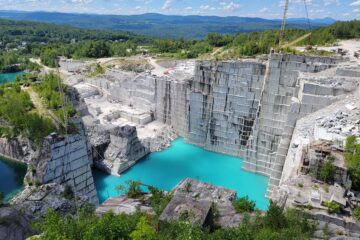
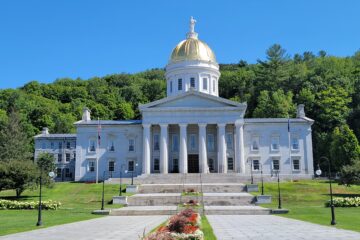
0 Comments